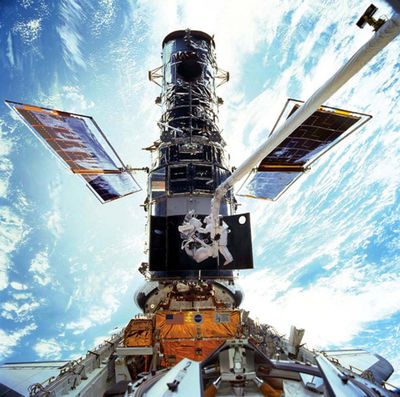NASA postpones mission to service Hubble
Telescope malfunction disables data transmission

CAPE CANAVERAL, Fla. – NASA said Monday it is delaying its mission to the Hubble Space Telescope until next year because of a serious breakdown of the observatory in orbit.
Space shuttle Atlantis had been scheduled to blast off in two weeks, but an unexpected problem with the Hubble appeared Saturday night when the telescope stopped sending science data.
That potentially means a new repair issue for the astronauts to confront – one that they haven’t trained for and never anticipated.
The abrupt, mysterious failure of the command and data-handling system for Hubble’s science instruments means the telescope is unable to capture and beam down the data needed to produce its stunning deep space images.
Early Monday afternoon NASA announced the Oct. 14 launch had been postponed until at least early next year, possibly February. Each month’s delay will cost the Hubble program about $10 million.
It could have been far worse, said NASA’s science chief, Ed Weiler.
“Think about if this failure had occurred two weeks after the servicing mission, we had just put two brand new instruments in and thought we extended the lifetime for five, 10 years and this thing failed after the last shuttle mission to Hubble,” Weiler said.
“So in some sense, if this had to happen, it couldn’t have happened at a better time.”
Hubble manager Preston Burch said the first step is to try to fix the telescope by switching to a backup channel for the science instruments’ command and data-handling system and allowing observations to resume. That should take a week or two. Even if the effort succeeds as engineers suspect it will, Burch and other officials still want to send up a replacement part for the bad component.
That’s because there would be no option if that one last working channel malfunctioned.
“Our plan right now is to take the delay and put up the new hardware … so that we can keep Hubble going for as long as possible,” Weiler said. “If we’re going to spend the money and take all the risk involved in a shuttle mission, we want to be sure that we leave Hubble as healthy as we possibly can and potentially lasting for five or 10 more years.”